2 years ago I wrote my “mobile studio” post where I shared my 3-angle-camera-in-a-backpack setup. Almost every item in that backpack has been replaced by now so I may have to do an update to that post one day. More recently (since September 2014) I have shifted my focus to audio in favour of our new Podcast In Tech We Trust. So here’s my current audio setup;
Podcasting at Home
Early on, even before starting with the first recording I knew that audio quality is key to a succesful podcast. So I wanted to have a good microphone. After some research I choose the Blue Yeti Pro. It’s not only a good microphone for podcasting, it’s also a very versatile microphone. The reason is it actually has 3 capsules that together give you 4 different recording patterns: Cardioid / Omni / Figure 8 / Stereo. This gives me the opportunity to also use it for concert recordings.
The Yeti comes with a very sturdy foot. That also has its downside; it picks up every small tick through the table (contact sound) which can be pretty annoying. So in comes the boom arm and shockmount. Lastly I added a pop-filter. This not only helps to eliminate pop-sounds, it also helps you keep the same distance to the mic at all times. This is important to get a consistent sound.
- Blue Yeti Pro: $199 – LINK
- Rode PSA-1 boom arm: $99 – LINK
- Blue Yeti shockmount: $69 – LINK
- SE Metal pop filter: $49 – LINK
- TOTAL setup: $416
For the recording software part we are using Skype to call in, capture it with Audio Hijack Pro, Audacity for editing and lastly Levelator to get everyones voice at the same level. In a next phase I may switch to recording the audio from all hosts to eliminate Skype breaking up but that’ll require more logistics, especially if we have one-time guests on the call.
Podcasting on the road
When I bought the Yeti Pro, I knew I had a very versatile microphone. The downside is that it is a condensor mic that records even the slightest noise in the room. The mic is just too perfect for podcasting on the road. Therefor I decided to switch to a table-mic setup. First issue: my ZoomH4N recorder only has room for 2 XLR mics so I had to find a bigger mixer. I went for the max setup that is still quite mobile: the Zoom H6 with the aditional 2x XLR input.
Now I have the possibility to add up to 6 mics on the table. For the mics I found dirt cheap but more than good enough Behringer XM1800S, which is a cardioid dynamic microphone and comes in a 3-pack. Cardioid so it only records the audio right in front of it, dynamic so it doesn’t need phantom power (like condensors). Especially since the additional 2 ports on the Zoom do not have phantom power.
Lastly I added some logistics stuff like a sturdy table stand and colored windscreens. The idea here is to combine it with coloured XLR cables (I’ll buy them next time I’m in the states). I don’t follow the numbering on the recorder but rather the physical setup of the mics on the table (circle wise, with the clock). This comes in very handy when you want to dial the gain down/up.
The only thing I am still missing today is a Pelican Case (1510LFC $195.99) to keep it all safer than in that backpack.
- Zoom H6 recorder: $399 – LINK
- Zoom EXH-6 Dual XLR input: $69 – LINK
- Behringer XM1800S 3pack – 2x $39 – LINK
- JB Systems JB52 table stand: 6x $15 – LINK
- 6-pack coloured 3ft XLR cables: $33 – LINK
- coloured mic windscreens: $13 – LINK
- TOTAL setup: $682
For recording software in the field I either use the Zoom recorder natively (WAV-file, 6 channel) or I record in Audacity through connecting the Zoom via USB (Audio Interface > Multi-Track > PC/Mac).
Now what’s your favorit geek setup? Audio, video and combined?
!!! EDIT !!!
Some people may draw the wrong conclusion that podcasting is really expensive through what I have combined in my setup. This does not have to be true. I sometimes choose more than minimally necessary just because of versatility or high end quality. If the only thing you want to do is podcasting from your desk, you could get started with just a USB mic and be done. I do recommend using a mic over a headset as a headset has a very small mic cap and is mostly too close to your mouth.
Here’s your google search: cardioid + large diaphragm + USB and this is a good type of mic you’ll find: AT202USB ($129)
EXTRA
Sometimes you are on the road with just a laptop or even an iPad and you want the least possible amount of gear with you. Please don’t fall for the “I’ll use my build-in mic for this once“. Why don’t you go for one of these?
Blue Snowflake – $50 – LINK
Samson Go Mic – $35 – LINK
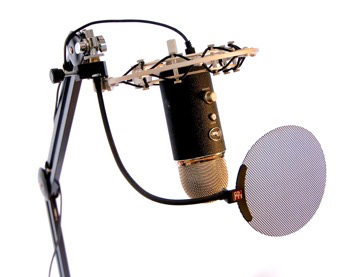
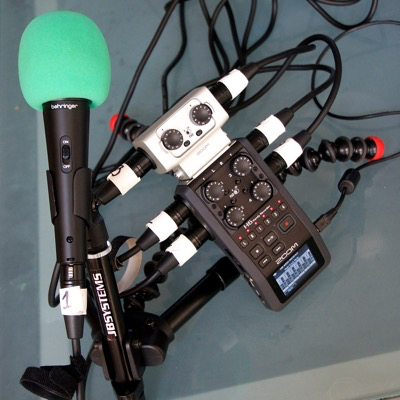
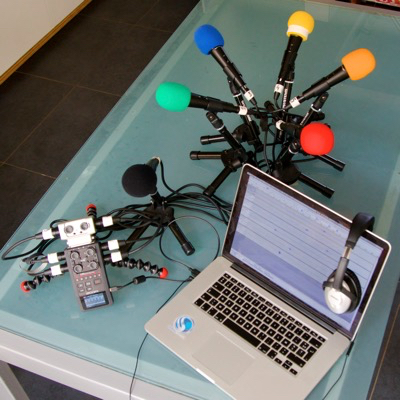
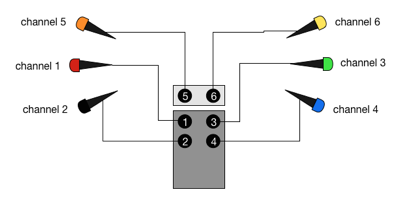
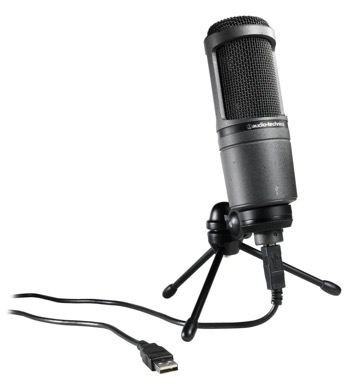

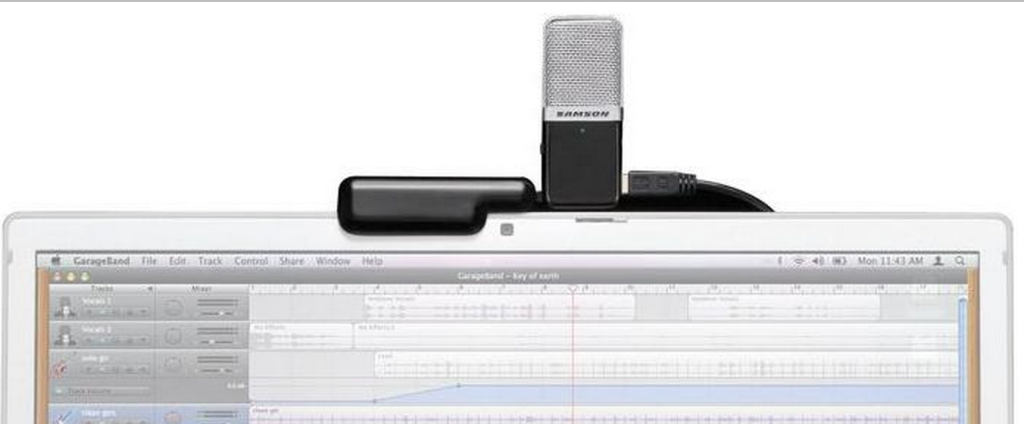
I use the Audio-Technica AT2020USB+ which adds a headphone jack. My friend who runs recording studios said AT mics emphasize the bottom end and since I hate how squeaky I sound to myself in recordings that was good for me.
No name Chinese versions of the arm, shock mount and pop filter are about 1/2 the price of Rode but require more screw tweaking to stay where you want than the good ones.
-Howard
Thx for chiming in Howard. That was exactly the reason I went for the Rode boom arm and the decent shock-mount from Blue itself. I don’t want to end up having to screw around to find a good angle or having the mic to come down due to it’s heavy weight.
The Yeti also has a headphone jack. I somehow haven’t felt the need of testing/using that. What I do like about this Pro version is that is has both USB & XLR which is part of the reason I went for this one. Now I can also use it as a road mic in an complete setup.
I’m mixed on mics with headphone jacks because they are very sensitive to things touching or playing with the headphone cable. The mic always pics it up.
That being said, we’ve had pretty good results with the Rode Podcaster. And the Rode boom and mount are decent.
Hans – an alternative to replacing the cables with the color cables is different color electrical tape. In fact, you can buy a variety pack with a bunch of different colors that may match your needs (and be cheaper).
yeah, I have looked for the electrical tape and couldn’t find the right colours 🙂 I just love the fact that those cables exist and for that price I can’t leave it alone.
I have 3 x Behringer XM1800S mics and a zoom h6 but the background hiss is far too high, even with the gain relatively low. Did you experience this and if so would you mind advising me?
Hi Kevin,
A background hiss in general is not uncommon. Not sure I had a lot of issues with these mics on that since they really were perfect for short distance podcasting, even with 6 men sitting next to each other.
In general if you have any setup that picks up too much background, the best trick is to record with an as low volume as possible and up the gain in post process after removing background noises. Of course without losing too much quality.
Sidenote: I have heard people complaining about the Zoom6 itself for hissing …
Thanks so much! Turns out I just needed to turn the gain down to 5 or 6 and it works fine.